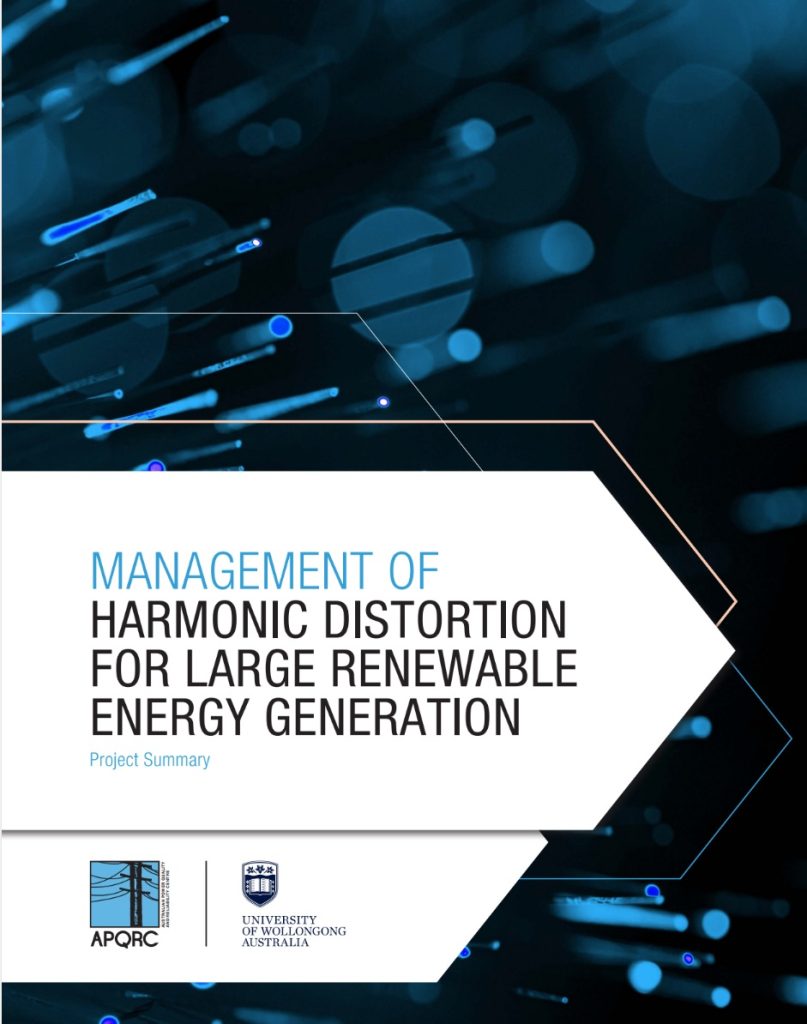The University of Wollongong has been investigating how to manage harmonic distortion in electricity supply networks with a particular emphasis on integration of large-scale renewable energy generators. This project summary presents the high-level outcomes of the project and is designed to explain the concepts and outcomes to a broad audience.
Report extract
 The Australian electricity supply industry is experiencing an unprecedented paradigm shift. Traditional large centralised (often fossil fuel) generation is being replaced by renewable energy sources both small and large.
The Australian electricity supply industry is experiencing an unprecedented paradigm shift. Traditional large centralised (often fossil fuel) generation is being replaced by renewable energy sources both small and large.
Transmission and distribution network operators are receiving numerous connection requests for renewable energy generators (REGs) ranging in size from a few megawatts to many hundreds of megawatts. Connection of these generators represents a significant change to the operation of transmission and sub-transmission networks due to: (a) there being a large number of them and hence there are many more connections; and (b) their interface to the network is predominately power electronics which may emit and/or be susceptible to power quality disturbances, especially harmonic distortion. The unprecedented increase in customer connections and power electronic interfaced devices has led to management of power quality, especially harmonic distortion, becoming of increasing importance to electricity network service providers.
With support from ARENA, along with a number of network operators, renewable energy proponents and renewable energy technology vendors, the University of Wollongong has been investigating how to manage harmonic distortion in electricity supply networks with a particular emphasis on integration of large scale REGs. This project, which began in 2019 and concluded in early 2022, implemented a thorough investigation of the management processes used for harmonic distortion and the potential impacts of high penetration of power electronics interfaced REGs on electricity network harmonic distortion levels. The primary objective of the project was to compare the efficiency, efficacy and technical robustness of the harmonic allocation management strategies that are currently used with alternatives that may be simpler to apply and are potentially more technically robust.
The project also sought to:
- Identify suitable aggregation methods for summation of harmonic current emissions from large-scale wind and/or solar farms in order to determine if application of diversity amongst identical devices is appropriate or whether direct arithmetic summation is more suitable.
- Provide preliminary assessment of the challenges related to assessing compliance of large-scale solar and wind farms with allocated harmonic emission levels



